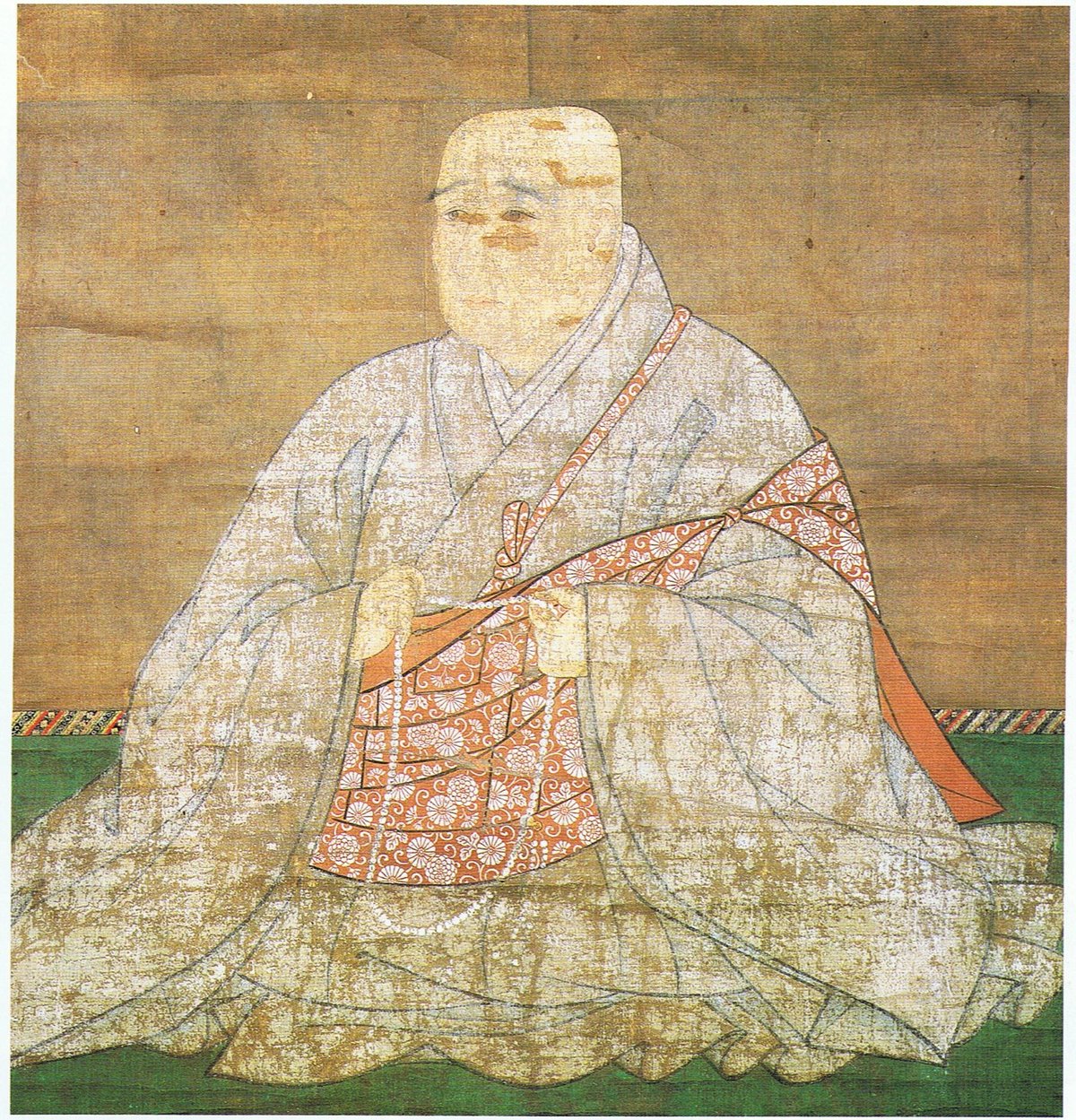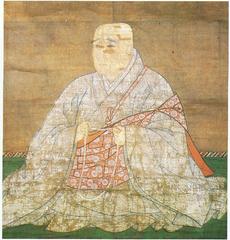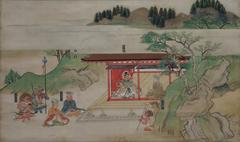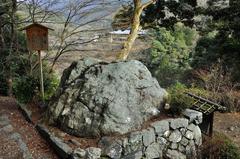
Jingo-ji Kyoto Visiting Hours, Tickets, and Historical Site Guide
Date: 14/06/2025
Introduction
Nestled in the forested Takao mountains of northwest Kyoto, Jingo-ji Temple stands as a testament to Japan’s profound Buddhist heritage and architectural artistry. Founded in the early 9th century, Jingo-ji blends esoteric Shingon Buddhist traditions with breathtaking scenery, making it a must-visit for history enthusiasts, spiritual seekers, and travelers exploring Kyoto’s cultural treasures. This comprehensive guide covers Jingo-ji’s history, architectural highlights, visiting hours, ticket prices, access tips, and seasonal features to help you plan a memorable visit.
Contents Overview
- Introduction
- Historical Overview
- Religious and Cultural Significance
- Architectural and Artistic Highlights
- Visiting Jingo-ji: Hours, Tickets, and Access
- Travel Tips and Nearby Attractions
- Special Features and Visitor Experience
- Frequently Asked Questions (FAQ)
- Conclusion and Recommendations
- Sources and Further Reading
Historical Overview
Foundation and Imperial Patronage
Jingo-ji traces its origins to the late Nara period (710–794 CE), when Wake no Kiyomaro established the temple complex that would become Jingo-ji (official Jingo-ji website). In the early Heian period (794–1185 CE), Emperor Saga elevated the temple to imperial status, recognizing its importance for both religious practice and the spiritual safeguarding of the new capital, Heian-kyō (Kyoto) (Discover Kyoto).
Role in Japanese Buddhism
The temple is closely associated with two towering figures in Japanese Buddhism: Saichō (founder of the Tendai school) and Kūkai (Kōbō Daishi, founder of the Shingon sect). Both spent significant time at Jingo-ji, exchanging esoteric teachings and establishing the temple’s reputation as a key center for mikkyō (esoteric Buddhist) training (Kyoto Tourism).
Medieval and Modern Era
Jingo-ji prospered during the Kamakura period and survived turbulent times, including destruction during the Ōnin War. The Edo period saw reconstruction of key buildings, such as the Tower Gate (Sanmon), and the temple’s present-day layout reflects both ancient and early modern influences (Wikipedia).
Religious and Cultural Significance
Jingo-ji is celebrated for its ongoing religious role, cultural legacy, and impressive collection of art and national treasures. The temple houses more than a dozen National Treasures and thousands of Important Cultural Properties, including Buddhist statues, mandalas, and calligraphic works by Kūkai (Discover Kyoto). The kawarake-nage ritual—throwing clay discs from the temple’s heights to ward off misfortune—is a unique tradition that continues to attract visitors (Chrononaut).
Architectural and Artistic Highlights
Tower Gate (Sanmon)
Rebuilt in 1623, this imposing gate marks the entrance to the temple grounds and is flanked by statues of the Four Heavenly Kings, symbolizing spiritual protection.
Main Hall (Kondō)
The Kondō enshrines the revered Yakushi Nyorai (Medicine Buddha) statue, an early Heian masterpiece and National Treasure (2ponderful). The hall’s elevated position requires an ascent up steep stone stairs, representing the spiritual journey.
Godaido and Bishamon-do Halls
Godaido houses the Five Great Kings (Godai Myōō), central to Shingon esoteric practice, while Bishamon-do is dedicated to Bishamonten, guardian deity of warriors and good fortune.
Pagoda (Tahōtō) and Sub-Temples
The rare two-storied Tahōtō pagoda and shoin-zukuri style sub-temples provide further insight into Jingo-ji’s religious and monastic functions.
Visiting Jingo-ji: Hours, Tickets, and Access
- Opening Hours: Generally open from 9:00 AM to 4:30 PM (last entry at 4:00 PM). Hours may change seasonally; confirm via the official Jingo-ji website.
- Admission Fees: Adults: 600–700 yen; discounts for children and groups. Tickets are purchased at the Sanmon gate.
- Access: Take Kyoto City Bus No. 28 or Kyoto Bus No. 62 from Kyoto Station to Takao bus stop, followed by a 20-minute uphill walk. No official parking, but private lots are available nearby (Good Luck Trip).
- Accessibility: The temple’s mountain setting means steep stairways and uneven paths. Limited wheelchair access; assistance is recommended for those with mobility challenges.
Travel Tips and Nearby Attractions
- Best Times to Visit: Autumn (late October–November) for vibrant maple foliage; spring (April) for cherry blossoms and quiet ambiance.
- Nearby Sites: Saimyo-ji and Kozan-ji temples complete the “Three Famous Temples of Northwest Kyoto.” The Takao area also offers hiking trails and forested scenery (Kyoto Travel Guide).
- Facilities: Traditional restaurants and tea houses near the entrance offer local dishes. Restrooms and souvenir shops are available by the main gate (Hike Master Japan).
Special Features and Visitor Experience
- Kawarake-nage Ritual: Throwing clay discs into the valley is a unique custom believed to dispel bad luck (JP Manual).
- Guided Tours: Available through local tourism offices and sometimes in English; advance booking recommended.
- Cultural Events: Special exhibitions and evening illuminations are held seasonally.
- Photographic Highlights: The stone staircase, main hall, autumn foliage, and panoramic views of Kinunkei Valley are not to be missed.
Frequently Asked Questions (FAQ)
Q: What are Jingo-ji’s opening hours?
A: Typically 9:00 AM to 4:30 PM. Confirm seasonal hours on the official website.
Q: How much is admission?
A: 600–700 yen for adults, with discounts for children and groups.
Q: How do I get there from Kyoto Station?
A: Take bus No. 28 or 62 to Takao bus stop, then walk uphill 20 minutes.
Q: Is the temple wheelchair accessible?
A: Access is limited due to stairs and steep terrain.
Q: Are guided tours available?
A: Yes, especially during peak seasons. Check with the temple or local tourism offices.
Q: When is the best time to visit?
A: Autumn for maple leaves, spring for blossoms, and winter for a quieter experience.
Q: Can I take photos inside the temple?
A: Photography is generally allowed outdoors but restricted inside sacred buildings.
Conclusion and Recommendations
Jingo-ji Temple stands as an exceptional Kyoto historical site where history, spirituality, and natural beauty merge. Its association with legendary Buddhist figures, impressive collection of national treasures, and unique rituals like kawarake-nage provide a deeply enriching experience. To fully enjoy your visit, plan ahead by checking seasonal opening hours, ticket information, and accessibility considerations.
Explore the Takao region’s other temples, participate in guided tours, and experience seasonal events for a comprehensive Kyoto cultural journey. For further insights and the latest updates, consult the official Jingo-ji website and Kyoto Tourism Board.
Sources and Further Reading
- Official Jingo-ji Website
- Discover Kyoto - Jingo-ji
- Hike Master Japan Jingo-ji Guide
- Good Luck Trip Jingo-ji Page
- Kyoto Tourism Official Site
- Wikipedia - Jingo-ji
- 2ponderful - Jingo-ji Temple
- JP Manual - Jingo-ji
- Chrononaut - Jingo-ji
- Kyoto Travel Guide - Jingo-ji
- SkyTicket Kyoto Guide
- Japan Highlights - Best Time to Visit Kyoto
- Lonely Planet - Kyoto Travel Tips













































































